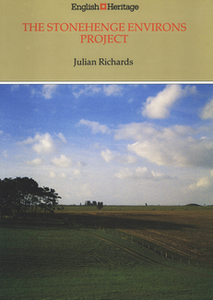English Heritage Archaeological Monographs
English Heritage, 2014. https://doi.org/10.5284/1028203. How to cite using this DOI
Data copyright © English Heritage unless otherwise stated
This work is licensed under the ADS Terms of Use and Access.
Primary contact
Historic England
The Engine House
Firefly Avenue
Swindon
SN2 2EH
Resource identifiers
- ADS Collection: 1416
- DOI:https://doi.org/10.5284/1028203
- How to cite using this DOI
The Stonehenge Environs Project
Richards, J.
English Heritage (1990)
Abstract:

This report summarises the results of a programme of archaeological investigation carried out between 1980 and 1984 in the immediate vicinity of Stonehenge. Whilst the ceremonial and ritual aspects of this landscape had been extensively studied in the past, efforts to trace and analyse the character of prehistoric settlement in the area had not been thoroughly pursued. The programme's main objective, therefore, was to identify prehistoric settlements in the area. This, it was hoped, would lead to strategies for their preservation and management. Surface collection of finds from a wide area first pinpointed the concentration of prehistoric material, and identified areas for more intensive survey, both by further fieldwalking and by small-scale excavation. The project demonstrated that there are traces of considerable Neolithic and Bronze Age domestic and industrial settlement and other activities to add to the framework of funerary and ceremonial monuments which characterise the Stonehenge area. The concept of this as a landscape reserved solely for ritual is therefore no longer tenable.
Download monograph
| The Stonehenge Environs Project, Richards, J., English Heritage (1990), ISBN: 9781848022096 | 54 Mb |





